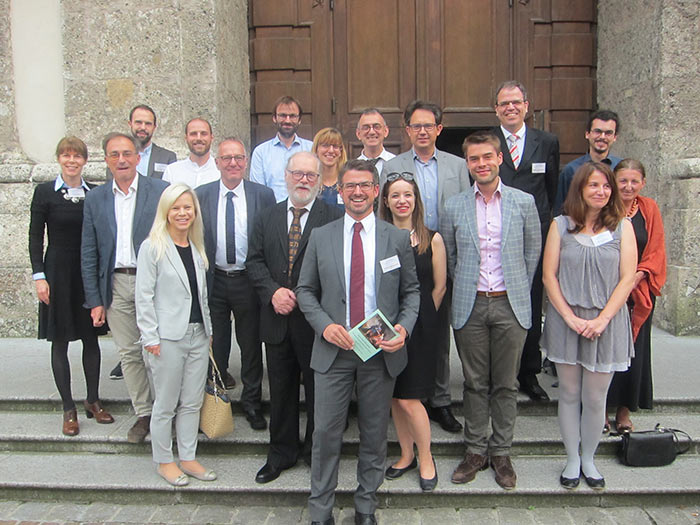Professor Paul Gwynne, Division Chair of Arts and Humanities, has just returned from a presigious conference in Innsbruck where he presented a paper on 'Love and Heroism in Jesuit Epic: Refashioning Nisus and Euryalus'.
The conference 'Love and Heroism in Early-Modern Latin Epic Poetry' was hosted by The Ludwig Boltzmann Institute for Neo-Latin Studies (LBI). The LBI exists to make up for the lack of representation and study of Neo-Latin literature (with a focus on the 16th to the 18th centuries) by taking a fresh approach to the subject: many studies have tended to look at Neo-Latin from the perspective of other disciplines such as classics, history, or the modern languages, which has cemented a misconception of the inferior nature and backward orientation of Neo-Latin literature. The LBI, by contrast, programmatically focuses on those aspects of Neo-Latin literature which can be understood as a dynamic element of early modern culture and which have made a significant contribution to the emergence of Europe as we know it today.
Professor Gwynne gave a paper which presented the heroism of the classical age refashioned to accommodate the ethos of the Jesuit order in the late sixteenth century. More specifically, he examined the portrayal of friendship between two young Brahmans who had converted to Christianity and were brutally killed alongside five Jesuit brothers on the borders of Salcete (near Goa, India). The two young Hindu boys had taken their first vows together and decided to die together rather than flee when their Jesuit superiors were surprised and attacked. Their double death is celebrated in an extended passage in the first Jesuit epic written by Francesco Benci(see 'Francesco Benci's 'Quinque Martyres'' published by Professor Gwynne in 2018) , professor of rhetoric at the Collegium Romanum. Here Benci celebrates the two youths in terms of the heroic friendship of Nisus and Euryalus portrayed by Virgil in Aeneid book 9. The poet concludes his eulogy by stating that the two boys will be admired and venerated in India until the Indus ceases to flow into the Ocean with its rolling stream. Indeed, Prof, Gwynne argued that their gory demise was portrayed in a fresco in the refectory of Sant’Andrea al Quirinale (now lost) with motifs borrowed from Caravaggio.

The aim of this conference was to examine the dimensions of the interweaving of love with Neo-Latin epics, and the interdependence between love and the heroic in the intersection of the reception of Greco-Roman antiquity and different real-world contexts. As has been shown by the recent research of Yasmin Haskell on emotions in early modern Latin poetry, and the considerations of Ludwig Braun in his paper with the provocative title “Why there is no love in the Neo-latin epic poetry?”, the topic of love and the heroic in Neo-Latin epics is not only vastly significant but also in urgent need of further critical discussion.
